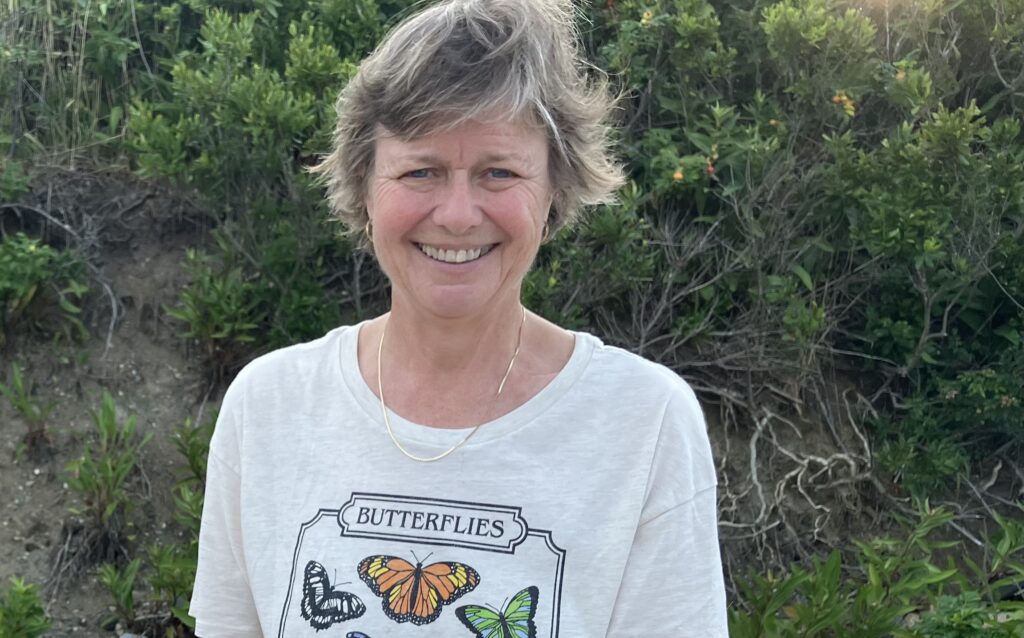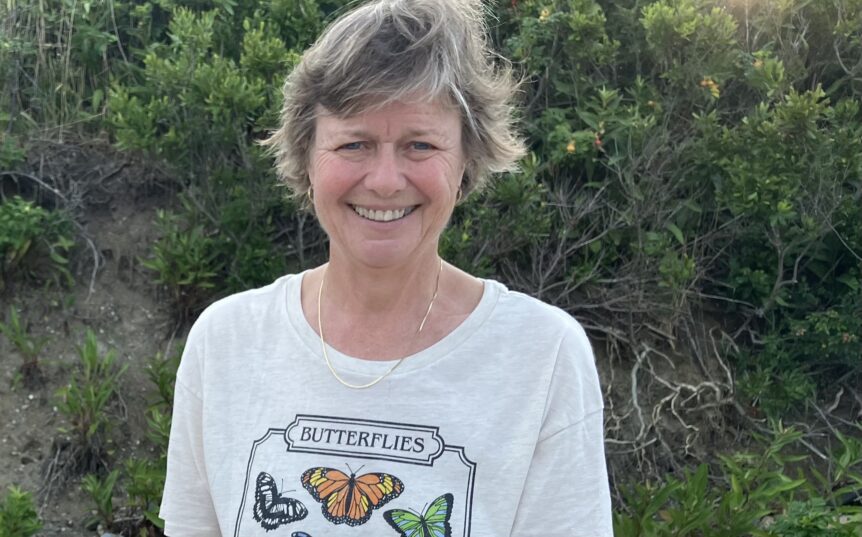(If the images do not come through on the newsletter, please go to my website www.amygivler.com to view them.)

Stigma, anyone? I remember when I was diagnosed with cancer (Hodgkin’s lymphoma) in 1993 that I felt a tad of reluctance to tell people about it. It’s not that I could have kept it a complete secret, by any means, because I was diagnosed at the hospital where both my husband and I worked – and news travels fast there. Besides, I was eager to tell friends so they could support me and, ideally, pray for healing. But sharing it with acquaintances, that is, people with whom I was not deeply invested, was a bit of a quandary.
Why, you ask?
Back in 1993 there was much less openness about a cancer diagnosis than there is now. As a family physician I had cared for many patients with cancer, and had taken an oncology elective during residency, and knew that many people wanted to keep their diagnosis and treatment as private as possible. This saddened me, for they were not availing themselves of the love and care that their friends could give. If the cancer progressed, and the person was clearly sick or dying, then the secret would leak out.
This scenario led to the general public, who were only hearing about a cancer diagnosis late in the game, thinking that cancer meant being very ill. Yet the world of cancer diagnosis and treatment had been transforming the world of cancer by the time I was diagnosed. More people were living – and thriving – with cancer in their past than ever before. One marker for this is the five-year survival rate, which for all cancers has risen from 60% at the turn of the millennium to 71% as of 2017.
Seldom does an oncologist use the word “cure” (they don’t seem to have the word in their vocabulary) but even in 1993 many, many people were living long and healthy lives in “long-term remission.” Knowing all this, I wanted to title my 2003 book, Cancer is Not a Death Sentence, but my publisher prevailed with a more positive title: Hope in the Face of Cancer.
Of course, different cancers have different response rates to treatment, with different long-term survival rates, and most of us want to live far longer than five years after diagnosis. But five years is a good start.
So early on in my diagnosis I decided I was going to be very open about my cancer, especially since the chance I’d have a long-term remission was very high. And I was right – 31 years and counting.
More Negativity
But what I encountered was something unpleasant. A widespread belief held at that time was that stress was the cause of cancer. After sharing I had cancer, many people asked me if I was anxious, or depressed, or feeling overworked. The line of questioning seemed intrusive. And far too often, it came with a suggestion that I needed to be whole-heartedly happy from that moment forward. If I was feeling sad (and yes, I was a bit sad having my life upended by cancer) I needed to wipe that frown off my face and think only positive thoughts. Since the cancer had only attacked me because of my mental state, the reasoning went, then the only path to removing it was staying cheerful at all times.
This was a heavy burden to dump on people newly diagnosed with a life-threatening disease. I wasn’t buying it – I knew enough about cancer to know that emotions were not its driving force. But I kept thinking about the vulnerable people who were not as well-versed medically. I was angry thinking of them having to deal with this verbal onslaught. Maybe I could do my part to lessen the stigma with my openness, and thus help them a little bit. Ever since I have spoken and written openly about my cancer history.
Fast Forward to 2024
Now I face a new diagnosis, one that has its own stigma attached to it.
Heart disease.
I dislike having this new diagnosis, but it’s not as strong a dislike as I felt toward cancer. For one thing, it’s not interfering with my life nearly as much. Cancer meant basically a year of chemotherapy with a slew of side effects, and two more years of slowly recovering energy. There were follow-up scans and decision points along with way, with uncertainty throughout.
My journey with heart disease, in contrast, has been fairly rapid and straightforward. It started with a radiologist spotting calcium in my coronary arteries back in March. (I’d had a chest CT for something unrelated.) I put that little nugget of information into the back of my brain, where I deposit all information I want to ignore. But when I saw my family doctor for my yearly visit in September, I mentioned the radiologist’s comment, and she ordered a coronary calcium score, which is a screen for atherosclerosis.
A good score is basically zero. Certainly you want a score below 10. Mine was 1033.
Bummer.
This led to my seeing a cardiologist. I have never had chest pain, so I was glad but not surprised that I had no evidence of a previous myocardial infarction (heart attack). But my nuclear stress test showed that – happily only with exertion – a big chunk of my heart wasn’t getting enough blood flow. That is, I was at risk of cutting off the blood supply to a substantial part of my heart muscle. A heart attack was likely in my future.
And so I needed a cardiac catheterization, commonly called a “heart cath”.
Next Step: A Heart Cath
A heart cath looks at the blood vessels that supply the heart with blood. All but one of my heart vessels were wide open, but that one, the left anterior descending artery, was 85% blocked. My cardiologist eased a balloon in the artery’s narrow passageway, then gently filled the balloon enough to open the artery so he could insert a mesh stent. That stent will – the Lord willing – keep that vessel open and functional for the rest of my life.
So in the course of one hour in the “cath lab” I became a person with a diagnosis of heart disease. I also became the owner of a shiny new stent, which hopefully will keep that heart disease from snuffing out my life. That timeline contrasts sharply with my 1993 diagnosis of cancer, which took a murky month to fully delineate, and then a year to fully treat and monitor, with all sorts of fits and starts along the way.
Why Did This Happen?
Having heart disease is a bit embarrassing. It’s like admitting that I am old. But then I remember I am 66 years old. But I don’t feel old, and my father is still alive at 100. And plenty of younger people have cardiovascular disease. But still, I am “over 65” – the group of people who are most likely to have heart disease.
So is it my diet? Seven years ago I completely changed the way I ate from the “Standard American Diet” (with its apt acronym “SAD”), to a focus on minimizing carbohydrates and eating whole foods (that is, avoiding processed foods or ingredients). This meant I was eating more fat, but it has been, as I like to describe it, “fat that God made.” That is, not eating seed oils which require massive processing.
This led to a 70-pound weight loss, a resolution of many aches and pains, and a big boost in energy and mental clarity. My cholesterol level, including the LDL “bad cholesterol,” dropped.
Going back to SAD would make me, well, sad. I’m quite certain it would lead to weight gain, and I don’t want to be obese again. When I was eating sugar, I craved sugar. It was an obsession, and I don’t want to go back to that, either.
So how shall I eat moving forward? I’m sticking with whole foods and will be focusing on making sure I eat enough protein and fiber, and substituting more olive and avocado oils (mono-unsaturated fats) instead of eating animal fats, which are saturated.
Room for Improvement
What are my other risk factors? I have never smoked, my blood pressure is low without medication, and my blood sugar is normal – lower than it was when I was eating lots of sugar and other carbs – although I do have a tendency to insulin resistance and there is diabetes in my family. I make sure I have quality sleep and I minimize stress as much as possible.
But, exercise, you ask. What about exercise?
Oh yeah, there’s that.
Okay, I could definitely improve in that department. I never feel good during exercise, and have no glow afterwards. Exercise for me is just a grind. I do enjoy walking, though, because I like to be in nature and breathe fresh air, but I don’t push myself very hard. Starting now, I’m committing myself to be more active.
A Very Big Club
With my new diagnosis, I have joined a very big club.
Heart disease is a very common diagnosis. And, (the bad news – which I know is no surprise to you) it can be fatal.
For many years, heart disease has been the leading cause of death in the United States, accounting for around one in five deaths. The following illustration by the CDC shows causes of death from 2017 in a nice (though sobering) graphic. [Note: CLRD stands for “chronic lower respiratory diseases”]

Now the good news: Heart disease is trending downwards. That is, it is becoming slightly less likely for people to develop heart disease.
As people get older they’re more likely to be diagnosed with heart disease. But, as this graph from the CDC shows (looking at the years between 2009 and 2019), those between 55 and 74 years old have a decreasing likelihood of carrying this diagnosis.

As common as heart disease is, you would think it would be a common topic of conversation. But it is not. Seldom have I heard a friend tell me about their heart issues, though I have often heard about their rashes, infections, arthritis, and headaches, to name a few. Seldom, that is, until I was diagnosed myself.
In the last month multiple friends have shared about their heart catheterizations, needed because of chest pain or a heart attack. Many have received stents or had bypass surgery. Before this, I had no idea. Of course I knew about my own patients’ heart disease because I monitor it, but cardiovascular issues do not seem to be topics of casual conversation.
I think it should be. We could be spurring each other on in our heart-healthy lifestyles. We can all be more aware of suspicious symptoms – in ourselves or in others – that might mean heart muscle is at risk. We could be encouraging friends with heart disease to stay vigilant.
Proverbs 4:23 speaks about the heart: “Keep your heart with all vigilance, for from it flow the springs of life.” Of course, the writer is being metaphorical – describing the emotional and spiritual “heart”. But it is certainly true for the physical heart also. We all need healthy hearts.
Just as cancer emerged from the shadowy gloom of shame decades ago, we can also bring heart disease into the light. Together, let us jettison the stigma.
